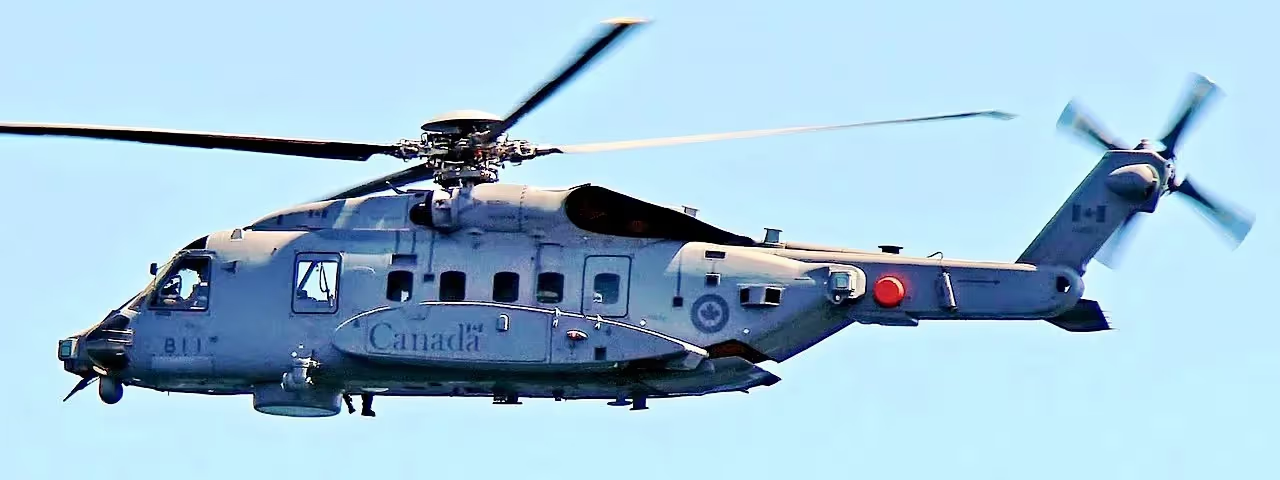Royal Canadian Navy DeWolf-class offshore patrol ships: HMCS Harry DeWolf (AOPV 430), Margaret Brooke (AOPV 431), Max Bernays (AOPV 432), William Hall (AOPV 433), Frédérick Rolette (AOPV 434) and Robert Hampton Gray (AOPV 435)
RCN, 2019-Present Day,
Harry DeWolf-class offshore patrol vessels

(RCN Photo)
HMCS Margaret Brooke (AOPV 431).
Harry DeWolf-class Arctic Offshore Patrol Ships (AOPS)
In July 2007 the federal government announced plans for acquiring six to eight icebreaking warships for the RCN. They are intended to conduct armed seaborne surveillance and sovereignty in Canada’s exclusive economic zone (EEZ), as well as on the Atlantic, Pacific and Arctic coasts. They are also capable of assisting the Canadian Coast Guard and other units of the Canadian Armed Forces in maritime support missions.
The vessels are modelled on the Norwegian NoCGV Svalbard, and built by Irving Shipbuilding, Halifax, Nova Scotia. The lead ship of the class is HMCS Harry DeWolf (AOPV 430), officially launched on 15 September 2018, followed by HMCS Margaret Brooke (AOPV 431), launched on 10 November 2019, both being built in the Halifax Shipyards. HMCS Max Bernays (AOPV 432), will likely launch in 2021, and HMCS William Hall (AOPV 433), will follow in 2022. HMCS Frédérick Rolette (AOPV 434) is planned to launch in 2022, and HMCS Robert Hampton Gray (AOPV 435) is planned to be completed by 2023. Both HMCS Harry DeWolf and HMCS Margaret Brooke are planned to be retired from service and paid off by 2044.
Two more ships of the class, not yet named, will be built for the Canadian Coast Guard. They have a conventional bow-first design for both light and heavy icebreaking, strengthened to the Polar Class 4 level. The vessels have a hangar and flight deck capable of employing and maintaining the same maritime helicopters as the RCN's other vessels: the CH-148 Cyclone and the CH-149 Cormorant.
These ships are being built for the Government of Canada Arctic and Offshore Patrol Ship (AOPS) procurement project, part of the National Shipbuiding Procurement Strategy (aka the National Shipbuilding Strategy). They are designed to displace 6,440 metric tons. They are capable of outfitting multiple payload options such as shipping containers, underwater survey equipment, or a landing craft. The vessels have a 20-tonne crane to self-load/unload, and a vehicle bay to carry vehicles for deployment over the ice. The ships have an enclosed cable deck and forecastle to better cope with the Arctic environment. On the open sea, the ship has fin stabilizers to reduce roll, that are retractable during ice operations. The vessels have a diesel-electgric powertrain with four 3.6-megawatt (4,800 hp) diesel generators producing electricity for two 4.5-megawatt (6,000 hp) propulsion motors. The RCN ships are armed with up to six modified BAe Mk. 38 Mod 2 25-mm cannon.
The Canadian Coast Guard version will be unarmed, and built to a slightly modified design. Modifications include a new bridge layout and accommodations for a non-military crew. Some areas are to be changed to meet the needs of coast guard equipment and there will be modifications to the deck.
These ships will provide armed sea-borne surveillance of Canada’s waters, including the Arctic; government situational awareness of activities and events in these regions. They will be capable of cooperating with other partners in the Canadian Armed Forces and other government departments to assert and enforce Canadian sovereignty, when and where necessary. (Wikipedia)

(WayneMason Photo)
HMCS Harry DeWolf (AOPV 430), lead vessel in class, under construction in the Halifax Shipyard May 2018.

(RCN Photo)
HMCS Margaret Brooke (AOPV 431).

(BAe Photo)
BAE Systems’ remote-controlled 25mm MK 38 machine gun.

(Dennis Jarvis Photo)
Sikorsky CH-148 Cylcone helicopter (Serial No. 148811).

